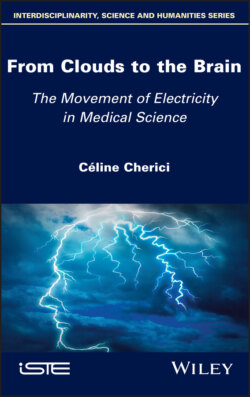Читать книгу From Clouds to the Brain - Celine Cherici - Страница 13
1
The Birth of an Electrical Culture: From Frankenstein to Hyde
ОглавлениеThe notion of the electrical culture [RHY 11, p. 9], developed by Rhys Morus in his book Shocking Bodies; Life, Death & Electricity in Victorian England, came about at the beginning of the 19th Century, coming to the fore through the discussion of two issues in which were mixed scientific aspects and the imagining of a force that seemed to possess all powers, such as:
– “re” creating life: indeed, experiments on the bodies of convicts were adjacent to the theme of electricity as the driving force of life. Aldini and Cumming, by re-animating corpses, dramatized demonstrations, thus spreading the links between galvanism and vital properties;
– control of behaviors: in the middle of the 19th Century, electrical medicine broke with the dualistic paradigm of the electrified automaton to locate, in the brain, the areas that would allow the control of behaviors through these therapies. This movement followed a more general shift from moral issues to psychiatric disorders.
From Frankenstein [SHE 18] to the main character in the novel The Strange Case of Dr. Jekyll and Mr. Hyde [STE 86], two periods, foundational for medical thought, are articulated. They both contributed to making electricity an intelligible instrument of exploration and treatment, and participated in a strong popular imagining about the possibilities opened up by the application of electrical techniques in medicine. This cultural and medical imagining weaved a context in which these applications took place. The first period took place from Galvani’s experiments through to those by Doctor Ure; then after 1840, a second period marked the passage from a dualistic medicine to a holistic medicine, where consciousness was embodied in convolutions. What seemed to correspond to an objectification of the applications of medical electricity, referred to the construction of a culture in which electricity represented a fantasized scientific positivism.
The use of electricity in the “resuscitation” of those who had drowned and the apparently dead was first proposed in 1778 by Charles Kite (1768–1811) to the Royal Humane Society in London. An active member [ALZ 05] of this learned society, he wrote An Essay on the Recovery of the Apparently Dead [KIT 88] for which he received a medal. In this essay, he distinguished suspended animation from irreversible death and described the importance of collecting the necessary information on each victim of drowning to assess a possible return to life. In his presentation, he stressed that a body that no longer reacts to electrical shocks should be considered dead. Electricity, in addition to revealing the properties of matter, was imagined, early on, as an instrument to explore the boundaries between life and death. In addition to having an important impact on the definition and description of the dying process, it was conceived and massively disseminated in scientific, literary and popular circles as a means of bringing people back to life.
